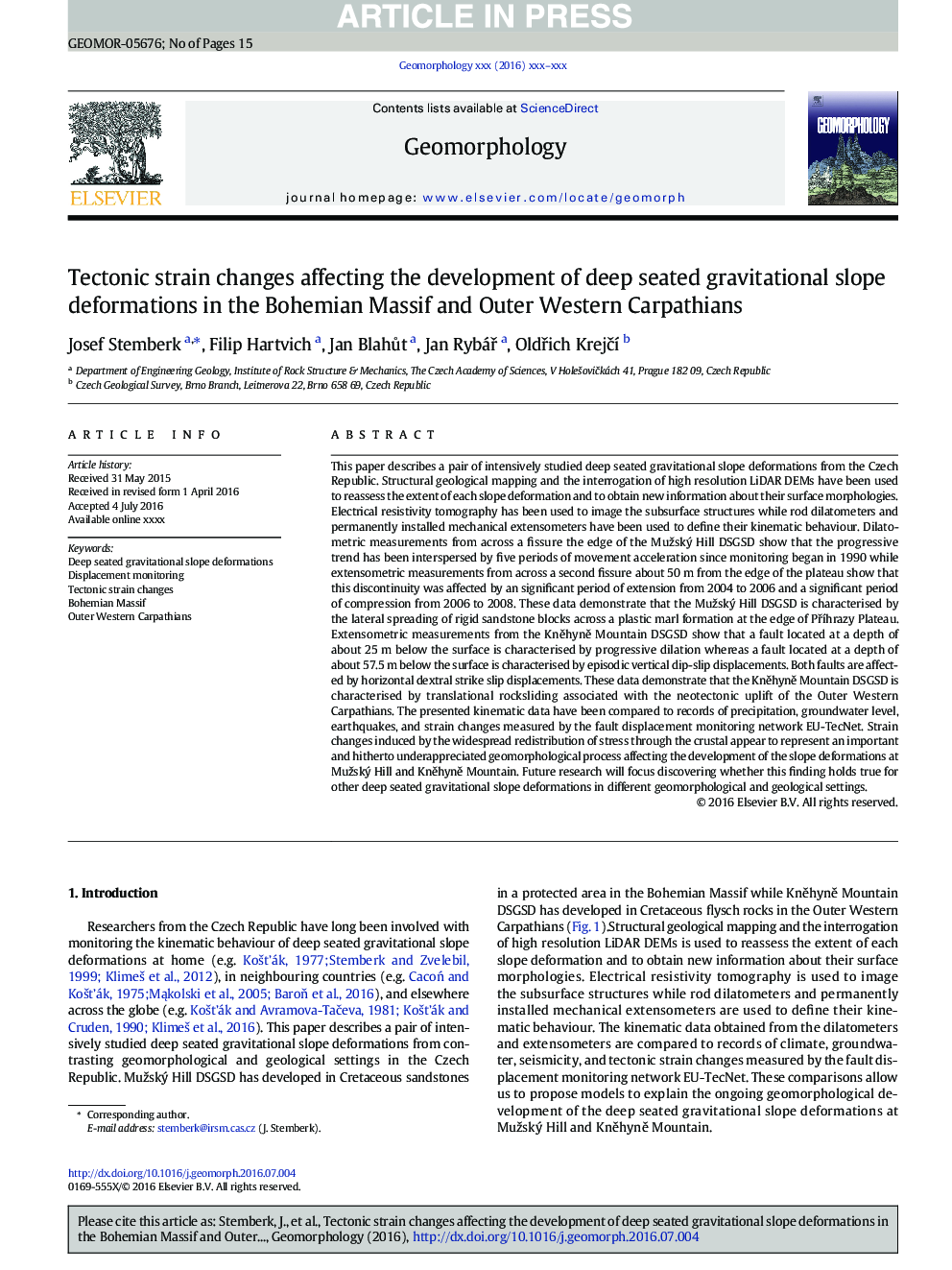| Article ID | Journal | Published Year | Pages | File Type |
|---|---|---|---|---|
| 5780967 | Geomorphology | 2017 | 15 Pages |
Abstract
This paper describes a pair of intensively studied deep seated gravitational slope deformations from the Czech Republic. Structural geological mapping and the interrogation of high resolution LiDAR DEMs have been used to reassess the extent of each slope deformation and to obtain new information about their surface morphologies. Electrical resistivity tomography has been used to image the subsurface structures while rod dilatometers and permanently installed mechanical extensometers have been used to define their kinematic behaviour. Dilatometric measurements from across a fissure the edge of the Mužský Hill DSGSD show that the progressive trend has been interspersed by five periods of movement acceleration since monitoring began in 1990 while extensometric measurements from across a second fissure about 50 m from the edge of the plateau show that this discontinuity was affected by an significant period of extension from 2004 to 2006 and a significant period of compression from 2006 to 2008. These data demonstrate that the Mužský Hill DSGSD is characterised by the lateral spreading of rigid sandstone blocks across a plastic marl formation at the edge of PÅÃhrazy Plateau. Extensometric measurements from the KnÄhynÄ Mountain DSGSD show that a fault located at a depth of about 25 m below the surface is characterised by progressive dilation whereas a fault located at a depth of about 57.5 m below the surface is characterised by episodic vertical dip-slip displacements. Both faults are affected by horizontal dextral strike slip displacements. These data demonstrate that the KnÄhynÄ Mountain DSGSD is characterised by translational rocksliding associated with the neotectonic uplift of the Outer Western Carpathians. The presented kinematic data have been compared to records of precipitation, groundwater level, earthquakes, and strain changes measured by the fault displacement monitoring network EU-TecNet. Strain changes induced by the widespread redistribution of stress through the crustal appear to represent an important and hitherto underappreciated geomorphological process affecting the development of the slope deformations at Mužský Hill and KnÄhynÄ Mountain. Future research will focus discovering whether this finding holds true for other deep seated gravitational slope deformations in different geomorphological and geological settings.
Related Topics
Physical Sciences and Engineering
Earth and Planetary Sciences
Earth-Surface Processes
Authors
Josef Stemberk, Filip Hartvich, Jan Blahůt, Jan RybáÅ, OldÅich KrejÄÃ,
